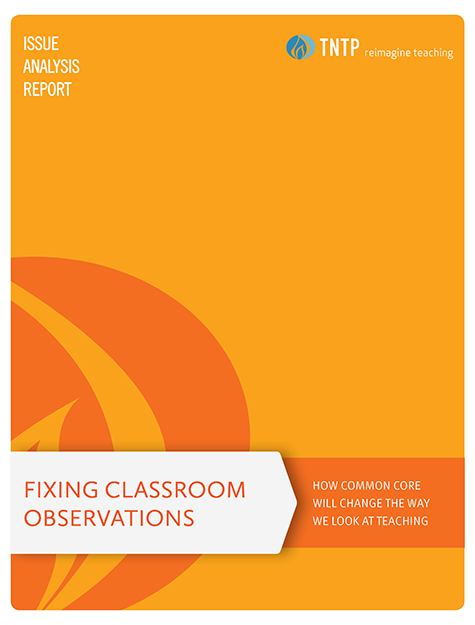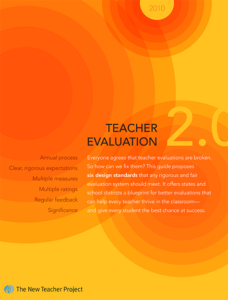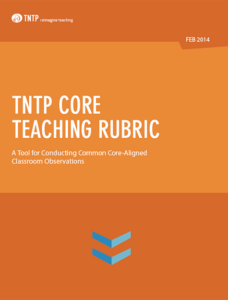Publication
Fixing Classroom Observations
How Common Core Will Change the Way We Look at Teaching

If we want evaluations to deliver valuable feedback for teachers, we have to fix classroom observations.
Classroom observations are the foundation of virtually every teacher evaluation system in the country, and they aren’t working. Today’s observation rubrics give observers too much to look for in a short amount of time, creating inflated and inaccurate ratings and leaving many observers struggling to provide useful feedback to teachers.
Fixing Classroom Observations outlines a set of ideas for evolving classroom observations based on lessons learned by dozens of states and school districts that have implemented new evaluation systems over the past several years. We propose bringing the same focus and coherence to classroom observations that Common Core brings to academic standards.
The new approach to classroom observations presented in this whitepaper is built around two “must-haves”: assessing what’s being taught in addition to how it’s being taught, and putting observation rubrics on a diet. But well-designed evaluation systems alone are not enough to produce more meaningful evaluation ratings—districts have to devote time and resources to implementing them to ensure that teachers get honest and helpful feedback.
To learn more, download the report.
Additional Resources
Related Topics
Stay in the Know
Sign up for updates on our latest research, insights, and high-impact work.
"*" indicates required fields

A teacher leads a one-on-one reading session focused on strategy and engagement.
About TNTP
TNTP is the nation’s leading research, policy, and consulting organization dedicated to transforming America’s public education system so that every young person thrives.
Today, we work side-by-side with educators, system leaders, and communities across the nation to reach ambitious goals for student success.
Yet the possibilities we imagine push far beyond the walls of school and the education field alone. We are catalyzing a movement across sectors to create multiple pathways for young people to achieve academic, economic, and social mobility.

